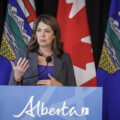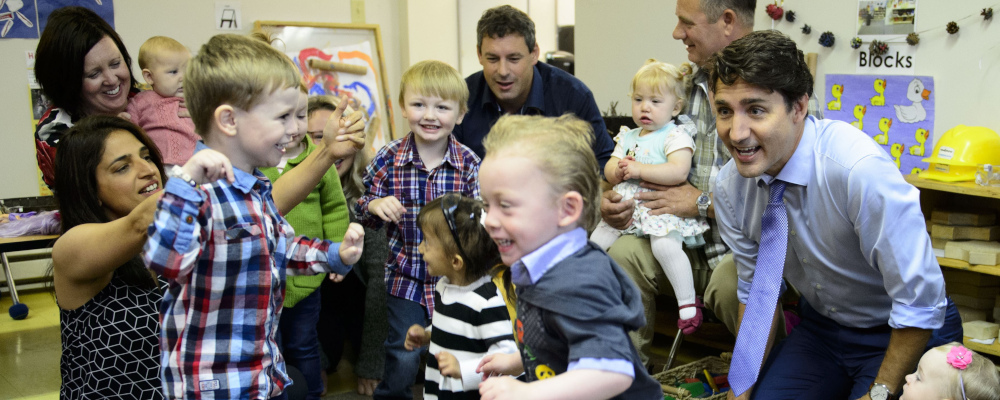Canada’s child care infrastructure is far from neat and tidy, but it does have an overarching logic to it.
Ottawa provides broad-based income support, conducts and supports research and supports provincial, territorial and First Nations roles through intergovernmental transfers. Provinces and territories oversee child care on the ground — regulating, licensing providers and providing operating and capital grants to providers, funding to local authorities for local publicly-run programs, and offering different forms of targeted supports.
More generally, provincial policy operates primarily on the supply side of the child care equation while federal tax measures and transfers to families operate primarily on the demand side.
The non-governmental side of Canada’s child care infrastructure includes a rich mix of providers and child care options. There are fully public providers in publicly-owned buildings at one end of the spectrum all the way through to nannies privately employed directly by families at the other. In between are charitable, non-profit and for-profit providers. There are family or day home providers, licensed and unlicensed care, and informal care provided by parents, relatives, or friends. To add to this, there are early-learning and child care development programs that take place in high-quality care settings and others that depend on parental involvement or drop-in models.
The design of the Canadian system reflects the four primary arguments for government giving money to parents for kids.
First, kids are not boats. Only a couple decades ago, If you were a middle income family the Canadian tax and transfer system treated your purchase of a boat the same as having a child — you got no tax or transfer benefit for either. The 2006 election was fought, among other things, on whether this should be fixed by building a new, expansive child care system or providing a universal benefit for all children in all families — $100 per child to be precise. The former would have created more gaps between supports for some families (dual earners) and not others (single earners or those using more private types of child care) while the latter created a universal benefit for all families with kids.
Over Harper’s ten years in office, tax and transfers to families with kids grew to $19 billion annually. Trudeau boosted that to just over $22 billion and refocussed benefits toward lower income families. Not only do nearly all families get a greater tax benefit to having children than buying a boat, but the latest budget introduced a new luxury tax on boats!
Despite all the hype, the plan on child care is just the opening bargaining position of the federal government.
Best of all, since 2006 child poverty has plummeted — a huge win for Canadian families.
Second, beyond the public interest in children qua children — and with huge, appropriate public subsidies in place to do so — public policy should recognize also the additional cost of working or going to school while having children. Put another way, if you work you should not be disincentivized to have children and if you have children, you should not be disincentivized to work.
Third and fourth, child care policy should correct for two other market failures. One is a signalling failure regarding the quality of care. A strong child care policy should ensure that when parents take the leap of faith required to leave their children with someone else, they have some assurance and expectation of quality of care. In a dynamic child care market, providers will always have more information than purchasers of care. For this reason, governments should play a role regulating the quality of care.
The other market failure is the deficiency of child care spaces to meet the demands of new parents. Available spaces will be heavily influenced by the level of tax or cash support for child care because more generous support will make more money available to build spaces. It will also be influenced by the degree of regulation because a more stringent regulatory regime will increase the cost per space. Even with very generous tax or cash support and modest regulation, the market may not produce adequate spaces. Filling this gap can be achieved by targeting public subsidy for spaces, whether operating or capital.
A trifecta of policy tools — cash and tax support for parents, regulating and funding spaces — describes Canada’s current system of child care. This system provides a great deal of policy flexibility. With it you could have modest tax support coupled with light regulation and modest subsidies for new spaces. Or you could have $7 per day care by heavily subsidizing both parents and spaces coupled with a very stringent regulatory regime on the quality of care.
Into this trifecta of policy tools the federal government announced in its recent budget a significant injection of cash. The budget committed to rising annual contributions to the provinces peaking at a total financial commitment, including existing commitments, of $9.2 billion annually by 2025/26.
The budget says the federal funding will flow as soon as “bilateral agreements are reached” to “make meaningful progress towards a system that works for families.” These will make up the initial five year agreements after which, “objectives and distribution of funding… would be determined based on an understanding of need and progress achieved as part of this initial plan.”
On other words, any and all funding is contingent on reaching bilateral agreements with the provinces. Still, the federal government has laid its opening negotiating position on the table saying federal funding would allow for:
- A 50 per cent reduction in average fees for regulated early learning and child care in all provinces outside of Quebec, to be delivered before or by the end of 2022.
- An average of $10 a day by 2025-26 for all regulated child care spaces in Canada.
- Ongoing annual growth in quality affordable child care spaces across the country, building on the approximately 40,000 new spaces already created through previous federal investments.
- Meaningful progress in improving and expanding before- and after-school care in order to provide more flexibility for working parents.
The budget also notes that an “asymmetrical agreement with the province of Quebec that will allow for further improvements to their system…” because Quebec arguably already has a system that meets many of these objectives.
There are some good things about this plan. First, Ottawa is starting this process acknowledging that child care delivery is provincial and that there are different provincial approaches — hence the asymmetrical approach it proposes for Quebec and the bilateral deals it proposes for the other provinces. The federal government does not intend on imposing a single agreement on all provinces, or even the nine provinces outside of Quebec. This is an acknowledgement that any redesign of child care must happen from the bottom up.
This is a good thing.
The second good thing is that this is a plan to build on the existing child care infrastructure. You can see this in the interim objective to reduce parental contributions by half and an eventual goal that continues parental contributions of $10 per day. And while these are admittedly federal aspirations rather than bilateral agreements (more on this below), the fact remains that Ottawa clearly intends to maintain parental payment rather than blowing up the system to create a free, universal, one-size-fits-all pre-pre-prekindergarten for kids as young as two — as some had been proposing.
There are also some bad things about this plan. First, Ottawa has done nothing to fix the biggest child care program the federal government actually runs. The federal Child Care Expense Deduction (CCED) is a rich program for rich people designed for a misogynistic age. The CCED was originally intended as a measure to recognize a cost of labour market participation facing mothers who work outside the home. That’s the origin of the rule requiring that the deduction be claimed by the lower income parent. But that is based on out-dated breadwinner model of Canadian families and incorrectly treats child care only a cost of mothers working, instead of a family cost of providing care and early learning to young children.
Another consequence of basing the deduction on the lower income spouse is that many middle and modest income families do not qualify for the credit, or qualify only for a small amount, while two-income rich families get the full benefit at their higher tax rates. The CCED needs to become a refundable tax credit — as the current Ontario government has done — so that it is more generous to middle and lower income families based on family income not the lower income spouse. Not fixing the CCED is a bad thing.
Another bad thing is that despite all the hype and excitement around the budget, the stark reality is that the budget plan on child care is little more than the opening bargaining position of the federal government. It is all aspiration, with the perspiration all dependent on negotiations with the provinces.
From a provincial perspective, we are pretty much where we were prior to the budget in terms of the types and styles of provincial child care programs. Only now there is a bunch of new federal money being offered to boost those programs. It’s not even clear from the budget documents if the plan requires provinces to put up their own money — despite what is clearly another federal aspiration to have the provinces pony up an equivalent share.
Yet, therein lies the opportunity. Now that the federal government has played its hand, all attention will turn to the provinces. They now, collectively or individually, have an opportunity to build and play their hand to make the system better. Some provinces may wish to copy the Quebec model with a cheap-per-day-program existing side-by-side with a generous refundable tax credit for those outside of that cheap-per-day program. Other provinces could reform the provincial portion of the CCED — converting it to a refundable tax credit, for example — and propose voucher programs to subsidize use and new spaces. And maybe one or two provinces could try build a free, universal, one-size-fits-all pre-pre-pre-kindergarten for kids as young as two — though that will require a lot of additional provincial investment.
Each province should get to work designing its own preferred system, and deciding how much additional money it wishes to put up to pay for that system. Provinces should counter federal aspirations with their own aspirations.
Then we can have a debate in each province about the merits or demerits of these proposed provincial systems, because at the end of the day it will be the provinces who have responsibility to fund and design provincial child care systems.
This is neither neat nor tidy. By injecting dollars into provincial programs prior to reaching agreements with the provinces, Ottawa has gotten things a little backwards. Still, there are good reasons to think both levels of government can muddle towards a better outcome if they really want to do so.
And that would be another huge win for Canadian families.
Recommended for You

‘Surprisingly bold’: The Roundtable on why Smith and Carney are riding high off this week’s energy agreement

Love her or hate her, Danielle Smith just won big

Is America’s economic dominance finally fraying—and is that good news for Canada?

Canada’s slow economic growth is a national emergency, and small tweaks won’t fix it: Hunter Prize 2025




Comments (0)